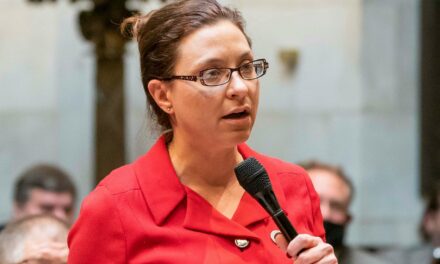
Audit details citations, wait lists at Behavioral Health Division

An audit of Milwaukee County Mental Health Board released Tuesday says the county didn’t generally set performance standards for the community-based care providers it contracted with, which may limit its ability to address poor performance.
The Legislative Audit Bureau also directed the board to develop a strategy addressing staffing shortages, which reduced the number of available beds at Milwaukee County Behavioral Health Division. And it questioned the division’s reliance on physical restraints that led to a citation in August for an incident of serious harm.
That citation was one of 42 the division received from the Department of Health Services in June and August for not meeting state and federal standards.
During the August visit by DHS reviewers, the division submitted a plan to reduce the frequency of using physical restraints. In 2015, it used restraints on children and adolescents 19.3 times more often than the national average and six times more often than the national average for adults.
Barbara Beckert, director of the Milwaukee office for Disability Rights Wisconsin, called the report of the citation “disturbing,” but noted BHD told the mental health board that no physical restraints were used on children and adolescents in September or October following the citation.
“I’m glad to see the decrease,” she said. She called for close monitoring of the use of restraints and “regular sharing of data and reporting.”
She said the audit addressed a number of concerns they’ve raised, including recommending that BHD clearly delineate community-based programs. There often isn’t awareness in the community on part of people who could benefit from the programs, she said.
BHD Administrator Mike Lappen wrote in response to the audit that a number of recommendations were implemented or at least partially implemented in 2016.
He also noted BHD will look to the board “to guide our response to the challenge presented in the LAB recommendations that appear to direct BHD to create more program ‘silos’ for consumers and their families.”
“As part of our initiative to become a national best practice leader in behavioral health, we have been moving to a more integrated, person-centered co-occurring and flexible continuum of care, where consumer choice and need drives treatment versus arbitrary program and eligibility requirements,” he wrote. “This appears to conflict with LAB suggestions to establish strict program boundaries.”
From 2014 to 2015, the division’s expenditures increased 1.3 percent from $171.4 million to $173.5 million. As the county sought to shift care provided in institutions to less restrictive, community-based settings, employment fell from 699 full-time equivalent positions to 585.3 during that period, according to the audit.
Assembly Committee on Health Chair Joe Sanfelippo, R-New Berlin, co-wrote the law enacted in 2014 establishing the board. He noted the county has shut down its long-term care facilities and is moving toward shifting its emergency room and hospital services to a private provider.
“I think that’s the right thing to do,” he said. “Over the last several decades, it’s been proven time and again that the county isn’t really providing the best quality of care that the individuals need.”
Sanfelippo said there are some things that the board needs to work on, like accountability with their contracts. But he described those as “growing pains” given the board’s been in place for about two years.
The audit directs the county to develop a strategy for addressing staffing issues at its hospital. The division’s inadequate staffing levels led to an average of 51.2 daily beds available for adults in 2015, below the budgeted 60.
That made the division’s goal of having a daily average of 52 or fewer adult recipients in its psychiatric hospital “irrelevant,” according to the audit.
The audit showed a growing waiting list for beds and services offered by BHD. While the division doesn’t place emergency or crisis patients onto a waitlist for a bed, it will do so for transfers from local hospitals.
While 676 recipients were placed on waiting lists in 2014 and 2015, 801 were placed on waiting lists during the first six months of this year.
BHD has set a goal limiting the amount of time recipients spend on the waiting list to 24 hours. In 2014 and 2015, 37 waited for more than 24 hours. That included one resident who waited for 99.7 hours for a bed in November 2015, when BHD’s psychiatric hospital was operating at 50 out of 60 beds.
Beckert noted there’s also been an increase in wait time for some community-based services. For instance, the waiting time for the community support program increased from an average of 22 days between October and December 2015 to 89 days in April through June.
“There’s not enough access to community mental health services, and the time for accessing them is longer than we think it should be,” she said.
Sanfellipo called for bolstering community-based services as well. He pointed toward the county looking at creating a facility on the north side of Milwaukee. “They have to focus on getting the community-based services that the county has been lacking for the last 30 years,” he said.





